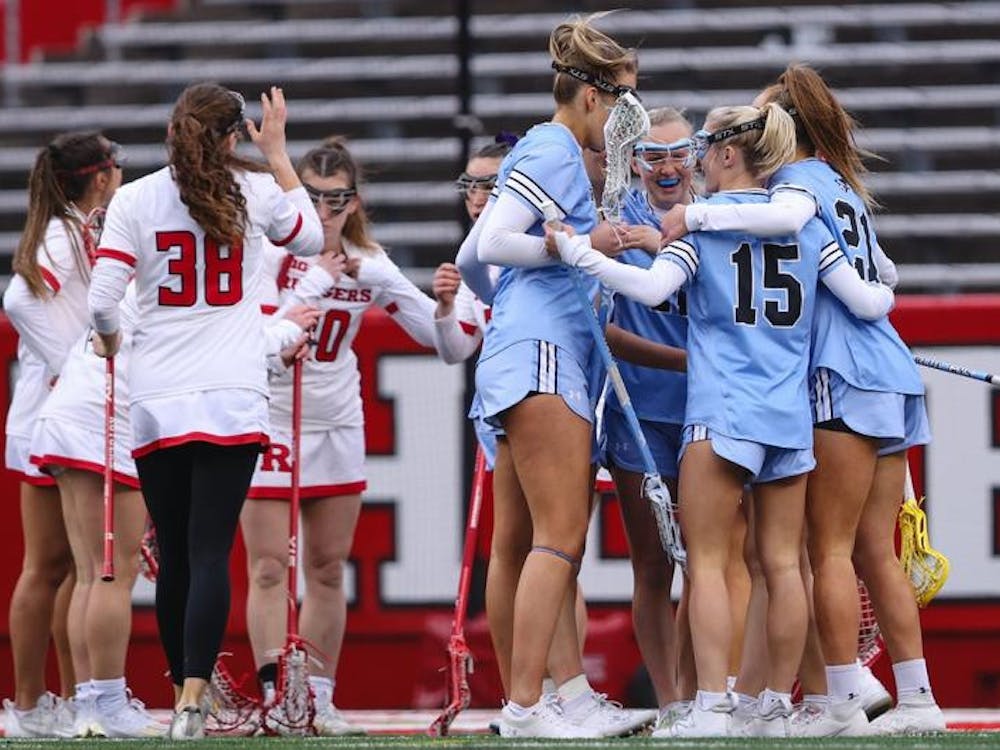Over the last decade or so, developments in technology have completely revolutionized the sports world, and new advances continue to improve circumstances for players, coaches and referees.
First off, the players can benefit from technology because of the safety improvements that come with them. While football has been in the spotlight when it comes to player safety because of the history of concussions and chronic traumatic encephalopathy (CTE) in the sport, new innovations have helped improve player safety in all sports.
In 2013 all Major League Baseball players were required to wear the Rawlings S100 Pro Comp helmet. The new helmet is designed to provide protection from pitches up to 100 miles per hour, compared to the old helmets that only provided protection up to 68 miles per hour. The difference in performance comes from Rawlings’ switch from plastic molding to carbon fiber sheets that cover the helmet.
In addition to the new helmet, new medical advances have also helped baseball players. With the increased prevalence of elbow injuries, more and more players require Tommy John surgery to repair injuries to their ulnar collateral ligaments (UCL). Accordingly, advances in treatment and recovery have increased success rates and decreased recovery time.
The newest research and development focuses on concussion-prone sports such as hockey, football and soccer. In hockey and football, scientists and researchers are looking into different ways to decrease impact on players’ heads from hits. In soccer, researches created new headwear to reduce the impact of repeated headed balls on players.
Many of these advancements are still in the preliminary phases and will continue to improve as time goes on.
Technology has probably helped coaches more than anyone else in sports. The ability to record, collect and analyze massive amounts of data has completely changed how teams play.
Baseball is the best example of this, as managers have used collected data to move players from their regular positions to maximize the likelihood of getting a batter out. If a certain batter tends to hit a ball to one side of the infield, the manager will put three of the four infielders on that side of the infield to increase the chances of getting an out.

In addition to this data, the introduction of the PITCHf/x and Statcast systems have changed how teams scout. The PITCHf/x database has information on every pitch thrown in an MLB stadium since the 2006 season, including velocity, movement and release point data. This information gives coaches the opportunity to predict how and when pitchers will throw.
Statcast tracks every play that happens and records data on throw velocities from the outfield, launch angles on hits and base-running speed when stealing a base. All this data has contributed to the changing approach around hitting, where batters now focus on increasing their launch angle to try and hit more home runs.
This trend led to a record-breaking 2017. Players hit more home runs than in any other year in MLB history.
This same sort of approach has begun to translate into basketball and football, where coaches are in the initial stages of implementing player and ball tracking to get more information about tendencies and areas of a team’s game that can be improved upon.
Last year the NFL implemented player tracking, and this year they will put trackers in the footballs to monitor the speed, rotation and direction of the ball during any play.
In basketball, player tracking helps to identify and model different plays and identify how successful certain plays are for certain teams. If teams are aware of that information, they can know which plays they should run more and which they should remove from their playbook.
Finally, referees are relieved from the scrutiny of always needing to get a play right on the first try. Advanced cameras can now definitively make tough decisions for referees in some cases, and in others it gives them a chance to slow down the play and take another look.
In soccer and tennis, sensors and cameras can conclusively make calls that seem ambiguous to referees.
In 2006, tennis implemented the Hawk-Eye camera system to decisively determine whether shots are in or out. Players can challenge calls they believe to be incorrect, and the referee merely presses a button to get the correct call.
In 2012, soccer teams started using a similar system to implement goal-line technology to tell whether a not a ball completely crossed into the goal. In a similar way to tennis, camera systems are set up at different angles to get a full representation of the ball and where it is in relation to the goal line.
In other sports such as baseball, basketball and football, the technology is not yet quite as advanced, but all the sports now allow video review to give the officials a second chance to make sure they got the call right.
With a chance to slow down the play and watch it multiple times, many calls that would previously have been ruled incorrectly will now be overturned. This means games will no longer rely on the calls of the referee but more so on how the players play.
Overall, technology has been beneficial for sports. As more advances are made, it will continue to protect players, aid coaches and correct referees for the foreseeable future.























Please note All comments are eligible for publication in The News-Letter.